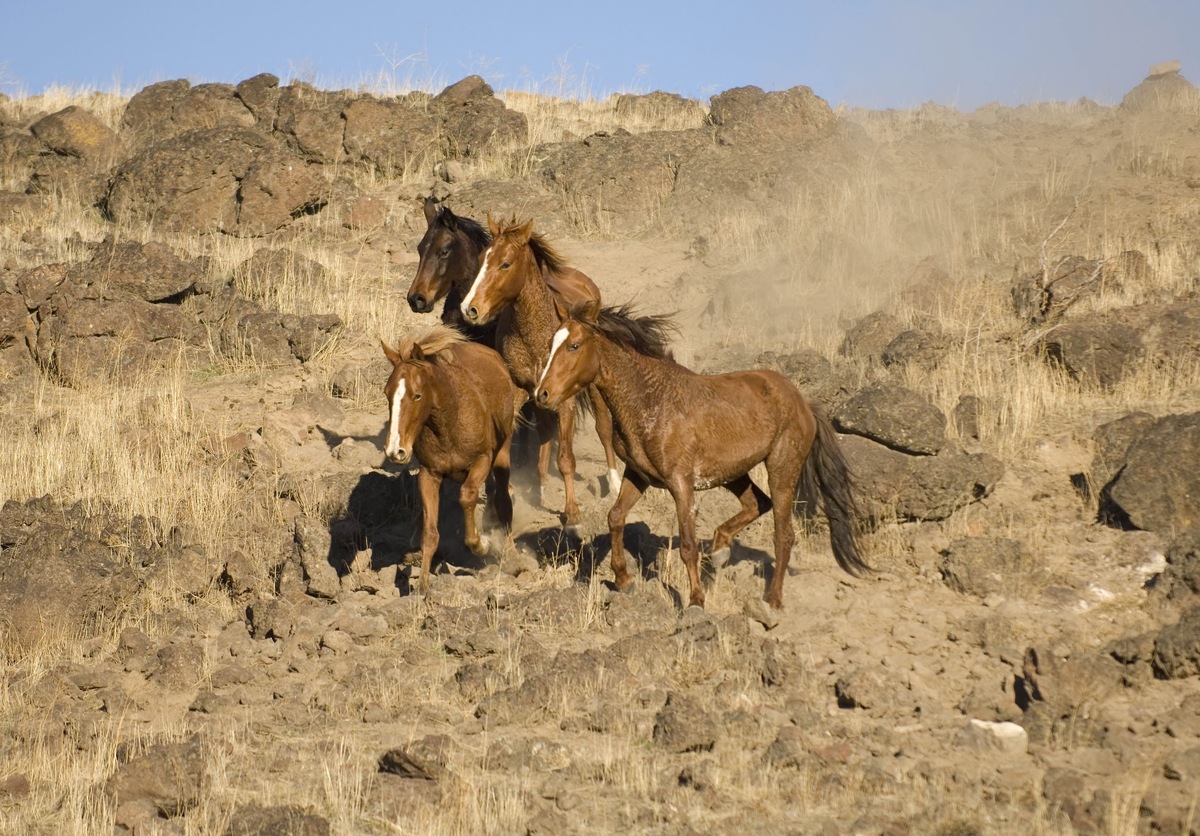

American Mustangs, the last of the free horses
Subdued, trained, domesticated horses surround us. In each of them, however, vibrates the deep soul of the last free horses, the wild Mustangs of the American West. These proud beings, returned to the wild, must be protected.
Fear
Fear enlightens his big dark eyes and runs through the surface of his body long nervous shivers that make his shiny flanks shudder. To the east, in the distance the cry of a hunting puma echoes through the night. The wind has not yet carried their smell to the nostrils of the puma, but the wind can turn, it’s only a matter of time.
The oldest among the mare’s snorts. She raises her head, neighs shaking her mane and then gets to work. We must leave the pasture very quickly. All follow her at a trot, because they know that fear gives birth to the right choices. For the Mustangs, life is flight. Fear is wisdom. And this mare carries it in her.
The small herd goes up to a plateau
The wind blows hard, the grass is scarce. Dominated by the snow-capped peaks of the Rockies, Montana’s valleys are scattered far and wide around them, scoured by rivers, canyons and lakes, covered with woods and meadows. Drawing in silhouettes on the setting sun, several males follow the herd at a distance. They are teenagers chased out of their group, who roam the plains in search of mares to seduce and herds to be established.
A beautiful stallion with a white coat and dappled in black, who protects the herd does not hear it that way. Under the passionate eyes of the females, he approaches his first rival, a proud young chestnut and who sizes him up, chest against chest. Side by side, the two males engage in a sort of highly practiced dance, lifting the dust from the ground with great hooves and standing face to face on their hind legs. The tall dappled stallion steers his opponent away without fighting or biting, while the young male gallops off with his companions with an air of misfortune.
A long time ago, these colourful horses arrived from Europe, in the holds of the Conquistadors ships.
Some escaped and went wild again. The Cheyenne and the Sioux then captured them and gave them great respect. After the massacre of the Indian nations, horses were free again and some of them are still free today. It did not take long for the memories of humans to fade from their minds and their old manners to return to them as from the beginning. During the unions that are freely decided between male and female, their coats have donned all the colours of the rainbow and their bodies have become smaller, strong and fast in harmony with nature. Their hair is thicker, to counter the ferocious winters of the north-western United States.
Head bent over the grass but ears erect, six adult mares graze alongside the stallion who returns and calms down. It’s up to them to think, to take care of the young and to take care of the good management of daily life. The oldest is responsible for deciding departures and moments of rest. On this point, everyone trusts him, the stallion like the others.
Tonight, everyone will sleep standing in the field of wild grasses. The cougar has moved away but the threat remains and we must stay ready. Tomorrow, when the sun rises again, the small herd of Mustangs will set out again to other hills, other water points, other softer and tastier pastures.
This world of extreme vigilance, common to herbivores, is however a happy world. How peaceful are the days when one dreamily grazes the slopes of a green hill, while watchers watch over them! May they be sweet, those moments of love when the foal of the year comes to push his muzzle against the teat to feed from milk so good!
Peaceful beings, without borders, without territory, that of wild horses.
They are constantly going where the seasons lead them. But today, there are few places where they can still live without the saddle, bit, halter, lanyard or reins. Wherever they live, they are hunted, killed, eaten, captured, and trained. Only the mustangs in the United States remain, the brumbies of Australia, which are shot from helicopters, and some semi-wild herds in the Camargue. With Przewalski’s horses and the genetically reconstituted Tarpan, they are the last free horses on our planet. The only ones in which we can still sense the deep soul of our own slave horses…